In Hvidtsten, just south of Oslo, Norway, the well known shipowner Fred Olsen has opened up a park for tall ship figureheads. Superstitious opinion has it, that figureheads with female attributes bring great misfortune to the boats.
In Hvitsten (just outside Oslo) the norwegian Fred Olsen (born January 1st. 1929), a pioneer ship owner in both the oil and the offshore sector, has dedicated large parts of his mansion to an exhibition of old figureheads. As you may know, the sail ship figureheads were mostly bare chested women and some animal alike cratures; despite the fact that maritime myths bared reluctant stances against women on board. The park is a great spectacle though, and is a park also giving room for the occational theatrical performances.
Some figureheads are ethnic but most of them depict women
Figureheads were primarily built of wood and represented the frontal part of a vessel in a prominant way (the bow). Although they was popular between the 16th and 20th centuries, figurehead carving reached its height during the nineteenth century. In fact, there are traces back to before ancient Greece, where the earliest usage is reported to be by the Phoenicians and later on by the Egyptians. Images of Greek and Roman goddesses and other women became popular subjects for shipcarvers. It became common practice for a shipowner to commission a figurehead with the likeness of his wife or daughter, and to name the vessel in thier honor. The figureheads had the form of people, beasts or mythological figures and thus carved representations of the spirit of the ships. Images of women have always played an important role in sailors' superstitions as they wometimes had strong magical or religious significance. The toothy and bug-eyed figureheads used on the Viking ships for instance, were aimed to protect the vessel from evil spirits, while the use of boars’ heads in Ancient Greeks was to symbolise acute vision and ferocity. Meanwhile, Romans used a carving of a centurion to represent valour in battle. The Phoenicians, Egyptians, Romans, and others carved and painted feminine symbols on their vessels to protect them at sea. Later, the lion on the English ships and the figure of a partially clothed woman became the most common figureheads in use across the world.
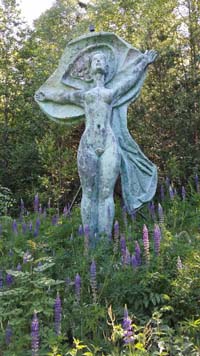
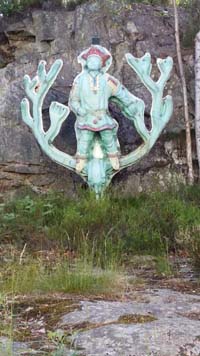
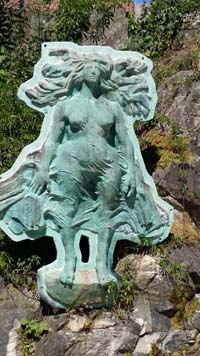
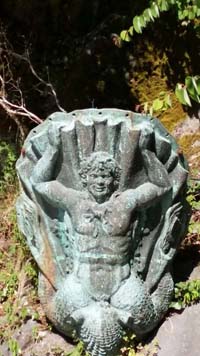
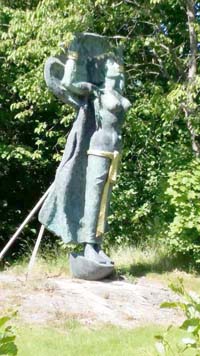
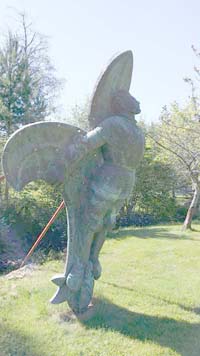
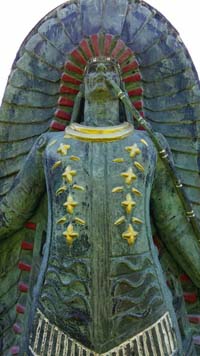
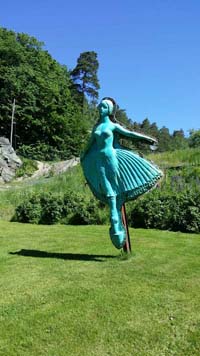
Women on board bring bad luck But still, a bare-chested woman as a figurehead would stick it to the nature and keep the waves away, sailors thought and defied the old maritime myth
Superstitions abound in all walks of life, but the sea faring folk seem to have more than their fair share. There are so many facets the ancient sailor’s life that he has no control over—the sea, the weather, market prices, politics, health – that he seemed to seize control over any aspect he could. Some believe this was out of a need to have some hope, some control over his fate. Keeping women off of a working ship was one of those ways, and like many superstitions in the work place comes from a very sensible origin. The fact is while in some cases there were rules against women on board ship (not passenger ships, however) it was more often due to the distracter factor than any superstition. A woman on board a ship full of men on a months-long voyage could bring on all sorts of headaches for the captain, not to mention the woman.
The Ironic Twist
While sailors would sometimes fight tooth and nail to keep women off of their ships, in many cases women were welcomed aboard. There are times when a wife would sail alongside her husband, and there is a reason that literature has examples of women disguising themselves as men to sail – it has a historical basis. The most ironic twist to the “women on ship are bad luck” superstition was the flip side of the coin, a superstition that had women being good luck in connection with the ship. Women were sometimes considered better navigators than men. Put this together with the power of a bare chested woman to “shame nature” and keep the waves away, and you have the reason behind the popularity of topless women depicted as figureheads on many sailing ships. Figureheads, or mastheads as they're also called, are carved statues fixed to the prow of the ship, and sometimes depicted as ancient creatures or warriors, but a very popular choice was a bare woman pointing the way to port. The reality that women were never allowed on board a merchant ship, however, falls more of an urban legend. Bear in mind that boat names often reflected a female family member, and a few speculate that the naming tradition reflects the waterman's connection to his family. So it was not all that bad after all.
Source: http://www.timelessmyths.co.uk/women-board-ship-bad-luck.html.
The Olsen family history
Fred Olsen is one of the most legendary persons in newer norwegian corporate history. At the age of 26, and without any corporate experience nor education, the shy and exentric Fred took over the family dynasty and developed it into the largest industrial company in the country. He run five publicly traded companies, built the worlds largest tank ship operation and was early involved in oil exploration in the North sea. He was central in the formation of SAS (Scandinavian Arilines System) and also managed to form Timex, the worlds largest proucer of watches at the time. The latter comes to no surprise with regards to line of business, since his father during WW2 bought the american Waterbury Clock Company where they made a fortune making timers for bombs.
Much later on, and after betting hard on tank ship operations during the oil crisis, the norwegian government had to save his company from going bankrupt. Right after that, he sold his comapny shares with an enormous dividend and stepped back a bit from the limelight, but now and then he still advocates the belief in the rather approximate 50-60 years cycles in business. Good thing is though, according to Mr. Olsen, we're in exactly such a cycle at the moment, but we're just not apprehending it.
Finding the park
Read more about the history of figureheads in this nice story at Marine Insight
A short and OK introduction can also be found here, at Royal Museums Greenwich
Last, but not least, Wikipedia has a short one on this as well
 About this site
About this site